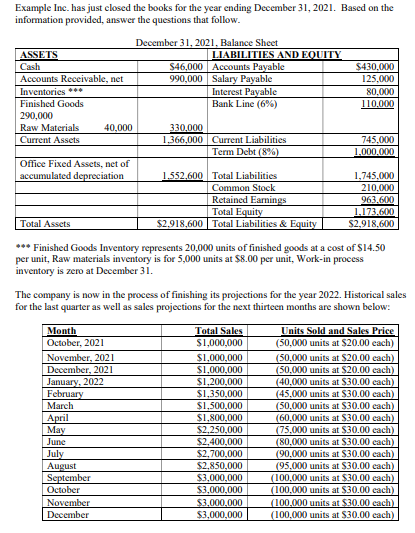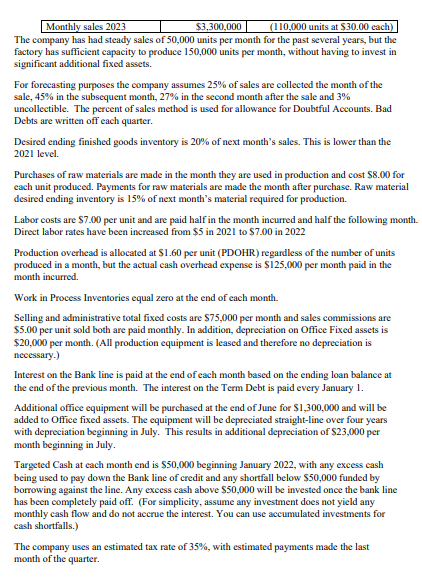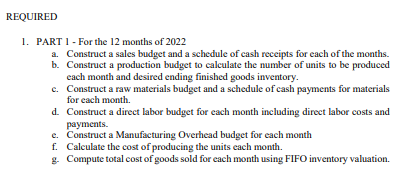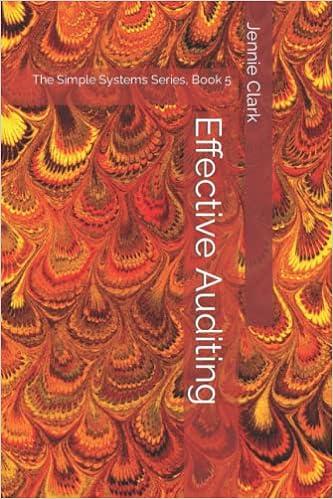


Example Inc. has just closed the books for the year ending December 31, 2021. Based on the information provided, answer the questions that follow. December 31, 2021, Balance Sheet ASSETS | LIABILITIES AND EQUITY Accounts Payable Cash $46,000 $430,000 125,000 Accounts Receivable, net 990,000 Salary Payable Inventories *** Interest Payable 80,000 Bank Line (6%) 110,000 Finished Goods 290,000 Raw Materials 40,000 330,000 Current Assets 745,000 1,366,000 Current Liabilities Term Debt (8%) 1,000,000 Office Fixed Assets, net of accumulated depreciation 1.552,600 Total Liabilities 1,745,000 Common Stock 210,000 963.600 Retained Earnings Total Equity 1.173,600 Total Assets $2,918,600 Total Liabilities & Equity $2,918,600 *** Finished Goods Inventory represents 20,000 units of finished goods at a cost of $14.50 per unit, Raw materials inventory is for 5,000 units at $8.00 per unit, Work-in process inventory is zero at December 31. The company is now in the process of finishing its projections for the year 2022. Historical sales for the last quarter as well as sales projections for the next thirteen months are shown below: Month October, 2021 Total Sales $1,000,000 $1,000,000 $1,000,000 November, 2021 December, 2021 January, 2022 February $1,200,000 $1,350,000 March $1,500,000 April $1,800,000 Units Sold and Sales Price (50,000 units at $20.00 each) (50,000 units at $20.00 each) (50,000 units at $20.00 each) (40,000 units at $30.00 each) (45,000 units at $30.00 each) (50,000 units at $30.00 each) (60,000 units at $30.00 each) (75,000 units at $30.00 each) (80,000 units at $30.00 each) (90,000 units at $30.00 each) (95,000 units at $30.00 each) (100,000 units at $30.00 each) (100,000 units at $30.00 each) (100,000 units at $30.00 each) (100,000 units at $30.00 each) May $2,250,000 $2,400,000 June July $2,700,000 August $2,850,000 September $3,000,000 October $3,000,000 November $3,000,000 December $3,000,000 Monthly sales 2023 $3,300,000 (110,000 units at $30.00 each) The company has had steady sales of 50,000 units per month for the past several years, but the factory has sufficient capacity to produce 150,000 units per month, without having to invest in significant additional fixed assets. For forecasting purposes the company assumes 25% of sales are collected the month of the sale, 45% in the subsequent month, 27% in the second month after the sale and 3% uncollectible. The percent of sales method is used for allowance for Doubtful Accounts. Bad Debts are written off each quarter. Desired ending finished goods inventory is 20% of next month's sales. This is lower than the 2021 level. Purchases of raw materials are made in the month they are used in production and cost $8.00 for each unit produced. Payments for raw materials are made the month after purchase. Raw material desired ending inventory is 15% of next month's material required for production. Labor costs are $7.00 per unit and are paid half in the month incurred and half the following month. Direct labor rates have been increased from $5 in 2021 to $7.00 in 2022 Production overhead is allocated at $1.60 per unit (PDOHR) regardless of the number of units produced in a month, but the actual cash overhead expense is $125,000 per month paid in the month incurred. Work in Process Inventories equal zero at the end of each month. Selling and administrative total fixed costs are $75,000 per month and sales commissions are $5.00 per unit sold both are paid monthly. In addition, depreciation on Office Fixed assets is $20,000 per month. (All production equipment is leased and therefore no depreciation is necessary.) Interest on the Bank line is paid at the end of each month based on the ending loan balance at the end of the previous month. The interest on the Term Debt is paid every January 1. Additional office equipment will be purchased at the end of June for $1,300,000 and will be added to Office fixed assets. The equipment will be depreciated straight-line over four years with depreciation beginning in July. This results in additional depreciation of $23,000 per month beginning in July. Targeted Cash at each month end is $50,000 beginning January 2022, with any excess cash being used to pay down the Bank line of credit and any shortfall below $50,000 funded by borrowing against the line. Any excess cash above $50,000 will be invested once the bank line has been completely paid off. (For simplicity, assume any investment does not yield any monthly cash flow and do not accrue the interest. You can use accumulated investments for cash shortfalls.) The company uses an estimated tax rate of 35%, with estimated payments made the last month of the quarter. REQUIRED 1. PART 1 - For the 12 months of 2022 a. Construct a sales budget and a schedule of cash receipts for each of the months. b. Construct a production budget to calculate the number of units to be produced each month and desired ending finished goods inventory. c. Construct a raw materials budget and a schedule of cash payments for materials for each month. d. Construct a direct labor budget for each month including direct labor costs and payments. e. Construct a Manufacturing Overhead budget for each month f. Calculate the cost of producing the units each month. g. Compute total cost of goods sold for each month using FIFO inventory valuation









